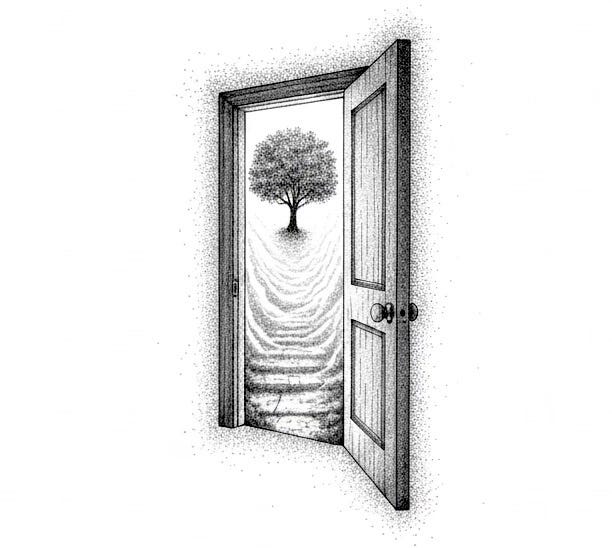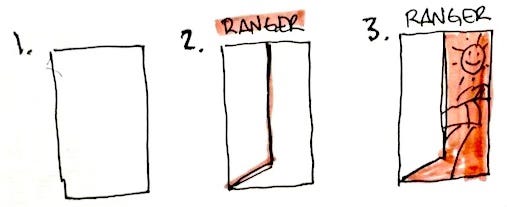When Everything Is Possible… and That’s the Hard Part
A simple exercise to help you sort through competing futures when work and identity suddenly reset.
Hi,
Last week my role was eliminated.
It was one of those moments that hits your system in layers.
First the shock… then the adrenaline… then the wide-open “okay, now what?” feeling that is equal parts thrilling and disorienting.
Suddenly my future felt like a map with a giant white spot in the middle.
Part of me was excited — maybe this is the moment to build something new.
Another part of me was overwhelmed — what if I choose wrong?
And a smaller, quieter part felt strangely hopeful — like a door I couldn’t yet see had just cracked open.
Whenever I’m overwhelmed by choice, I pull out an exercise I’ve used for years.
It’s simple, visual, and grounding.
I call it: “The Room With Many Doors.”
The Room With Many Doors
1. Draw the Your Doors.
Take a sheet of paper and draw one door (rectangle) for each future you consider.
Label each door with a future you’re considering (e.g. Ranger).
Then — this part matters — draw each door open, closed, or partially open. Representing how accessible that future seems to you. Don’t overthink this, just trust your gut. Your pencil usually knows the truth before your mind does.
2. Visualize what’s behind each door.
Let whatever image comes up, come up:
sunny field, fog, forest trail, chaotic city, warm light, a blank nothingness.
These metaphors reveal how your body feels about each option — long before your brain starts negotiating with itself.
3. Note the answer to three questions per door:
• What makes me hesitate?
And is that hesitation fact (real constraints) or fiction (assumptions, fear, unknowns)?
• What makes me want to walk through that door?
Meaning? Growth? Freedom? Stability? Creativity? Impact?
3. Check for patterns or what is missing?
Reviewing what you created, reflect on the patterns that show up and what seems to be missing. I was surprised to see no computer in any of my futures although that has been 90% of my work.
Why This Works
This exercise taps into what psychologists call “construal level theory” — the idea that we think about the future on two levels:
abstract meaning (the big picture) and
concrete detail (the actual steps).
Drawing the doors pulls both levels into the same frame.
It helps your brain hold excitement and reality at once — turning vague possibilities into choices you can actually compare.
In other words: it makes the abstract future tactile enough to work with.
What It Revealed for Me
As soon as I drew the doors and what’s behind them, patterns showed up:
Several futures would give me the same core things I care about — creativity, meaningful contribution, working deeply with people, space to explore.
One door was almost closed because of real constraints. Others were partly closed for no practical reason, just fears (fiction) of an uncertain future or inability or limitations.
And one door — the “Author + Speaker”-door — had this bright yellow sun and a journey hidden behind it. The image surprised me as I realized how it made me want to start walking on that path, but I also felt hesitation and fear.
Regardless of the future, reflecting on the doors showed me that I need:
companionship, path clarity, the excitement of growth and exploration, and a mentor who can help me on my way.
That alone shifted me from “I’m overwhelmed” to “Okay, I know where to begin.” Next step, finding and connecting with the right people to get clarity.
Wondering about Your Future?
Try the exercise.
Give yourself 20–30 minutes.
You’ll likely discover:
which futures energize you
which fears are real vs imagined
what themes your options share
what each path offers you emotionally
and what you need to move forward (not in theory, but in practice)
Most important: it gives you the smallest next step toward the door that’s calling your name.
And in moments like this, clarity rarely arrives all at once —
it usually comes one doorway at a time.
If you do the exercise and want to share what you learned, hit reply.
I’m in the room with you.
Ingo



